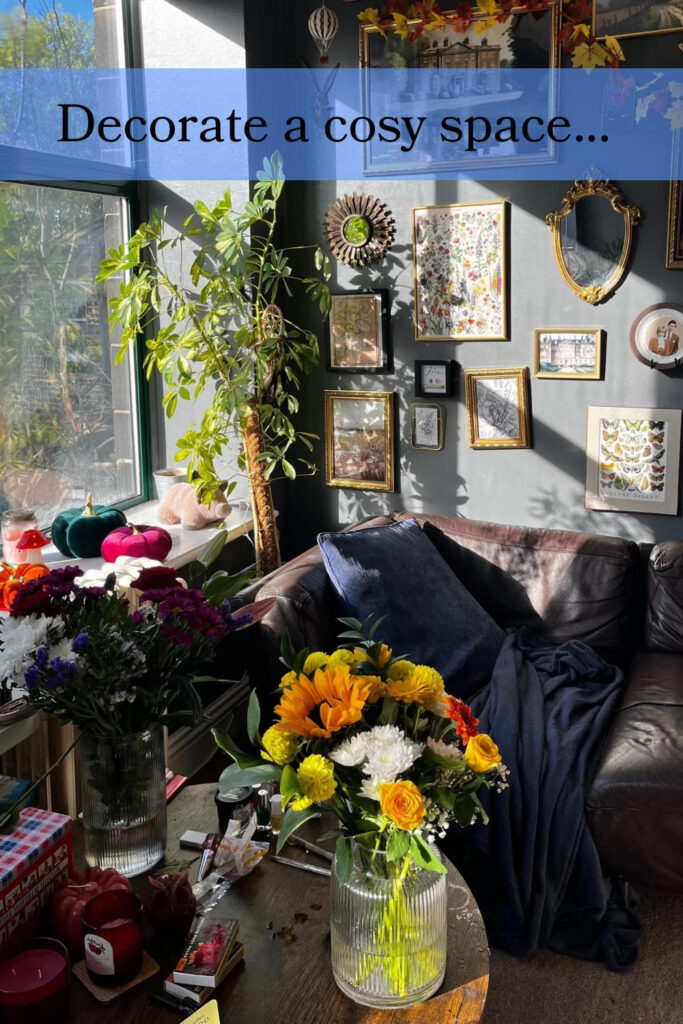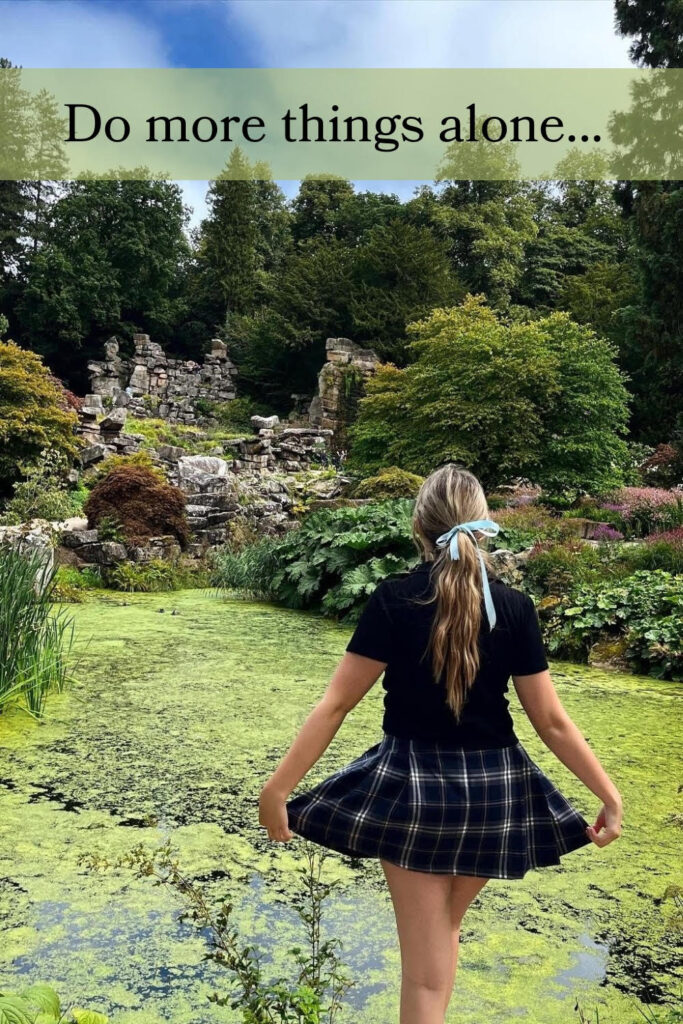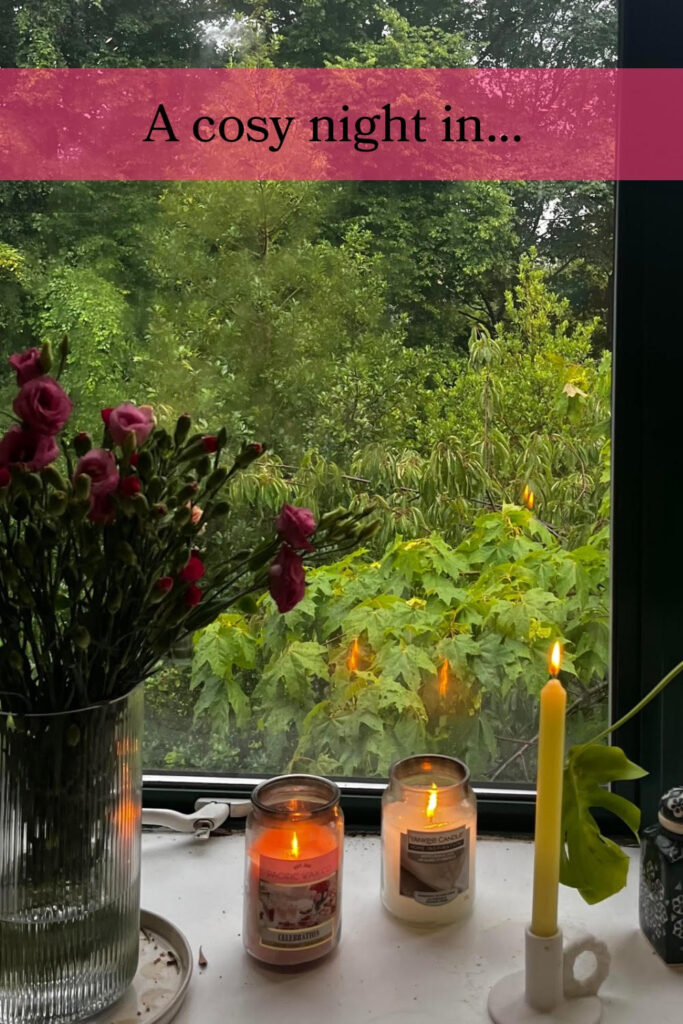Have you been trying to stay in the present moment and find pleasure in the little things? It can be hard to go from a fast-paced world to a slow living lifestyle. Slow living is all about putting yourself first and figuring out the right speed to live your life, here are some of the best ways to improve your daily routine and focus on your mental health.
1. Introduce creativity in to your daily life!
Whether this means creating art via painting or drawing, or learning how to knit in front of the TV, there are so many different creative hobbies you can try to bring a little bit of joy to the every day. Creating and adding to the world gives us significant internal fulfilment, but it can be a challenge to engage in a hobby that has no monetary gain or ‘productivity’ in the eyes of a busy, chaotic life, it can take time to see things like this can just be fun and that is significant itself.

2. Invest in some slow fashion items
A big part of fast-paced living is getting sucked in to fast-fashion and instant gratification of new orders and different outfits. There is even social stigma about wearing the same thing, which creates internal stress and a need to keep adding items to our wardrobe. Try investing in a piece of day wear that you can wear over and over, brands like Celia B and Before July make lovely items you’ll love investing in.
3. Try different types of social media
It’s easy to suggest reducing the use of digital devices, or even deleting social media in order to live a slow lifestyle – but that’s not always realistic! Try different types of social media instead, or unfollowing toxic accounts that damage your mental health. For example, accounts that promote weight loss products endlessly can be very annoying and often lead to just scrolling past, but even absorbing that content can leave a bad taste. The slow living mindset is all about re-adjusting our thinking around aspects of everyday life. Try Pinterest accounts, or slow living Youtube vloggers that have meaningful content that you actively want to engage with.
4. New weekend hobbies
When you work 9-5, the weekends can often revolve around chores, catching up with family, and going out drinking as our only form of socialisation. Drinking alcohol weekly can become wearing, create anxious thoughts and impact our physical health. Reducing the number of activities and events where alcohol is a requirement is the first way to go. For example, some meaningful hobbies for the weekend may be pottery painting, walking tours, tasting menu’s or kayaking in the summer season.
5. Decorate a cosy space
If you make your home somewhere you want to spend your time, you are allowing your mind to relax and look forward to this quiet time. Try adding simple decor to make your spa beautiful, like fresh flowers, candles, pretty art work. The idea is to make the space something you would want to take a photo of, or something a guest would admire.

6. Plan your first slow travel holiday
We can feel pressured to spend our limited time off doing adventurous travel adventures that take a lot of energy to plan and organise. Cosy, local weekends away or day trips aren’t for retirees or families, they are a fun way of experiencing a slower way of life. Try looking for a couple of nights away within your own country, and make a conscious choice to find somewhere surrounded by nature where you can enjoy the quiet serenity of the country.
7. Self care is a top priority
A top slow living tip is to invest in time where you exclusively look after your body and wellbeing. Whether this means solo spa days, or face masks in front of the fire, self care is a budget friendly activity. So many of us do the bare minimum of looking after ourselves, especially when busy and overwhelmed. But putting an hour aside each week to give yourself the full attention you deserve is the greatest way to create a more meaningful routine.

8. Slow fitness routines
Messages on social media about the best fitness routines can be confusing. We tend to be drawn towards weight lifting or Pilates this past year! But the simplest thing you can do (and the free thing) is going for a long walk, looking at some nature and taking a deep breath of fresh air. Some days in busy lifestyles with working at home or long hours, we forget to set boundaries with setting time to look after our physical health, and if you aren’t careful it can turn in to a cycle where we end up hating cardiovascular exercise. It doesn’t need to be difficult to be productive.
9. More deliberate cooking ideas
The slow food movement helps your mind appreciate the value of simple living. Often we can feel irritated and burnt out by ‘having’ to cook at the end of a busy day, but preparing fresh ingredients in a slow, deliberate fashion helps us be more present in the moment. It doesn’t mean cutting out fast food or things you love, its about the enjoyment of good quality food as well as anything else in life. try something simple like blending a smoothie, homemade guacamole or a picture perfect fruit salad.
10. Set small, achievable goals
A common misconception about the slow living movement, is that setting a to-do list and daily goals is good for the slow mentality – but it’s not. Waking up to a to-do list will make the day focused on productivity – stress relief. Small, achievable goals that are not monetary based are definitely the way to go. Some examples of how this might look is, finishing a good book within the month, trying out a new coffee shop, clearing out your wardrobe for the charity shops, or walking for a full hour. The art of slow living is about making deliberate choices to enjoy your day – not tick boxes, you need to work hard to adjust this mentality.
11. Let go of resentment
Easier said than done, but one the biggest contributors to stress is hanging on to things that hurt us in the past. Maybe that job interview didn’t go your way, or a friend made a rude comment that plays over in your mind. Letting go and focusing on something else is part of the broader slow living movement, and more likely to be possible once you have taken on board easier slow living techniques. Once you start to realise the important things in life, old stresses and worries no longer hold value. The best way to forget about stressful moments, is to reduce talking about them, have quiet time alone in a safe, cosy space – don’t breathe life in to them.
12. Do more things alone
Solo travel can be very intimidating, especially for women travelling alone. It’s not that easy to conceive for the anxious mind, no matter how much you see about it online! Try smaller goals, like shopping alone, having coffee alone, or even a simple day trip. Making that first step towards a slower mindset can be concerning, but practice makes perfect. Being alone with your own thoughts, maybe writing things in a journal would be good, spending that quality time with yourself, who is ultimately the most valuable relationship of your life.

13. Clear out your wardrobe
De-cluttering is very very challenging for anyone too busy to realise the amount of clothing you accumulate. When adjusting from a lifestyle with new outfits on a weekly basis, to a slower one where you maybe want a few pieces of good quality clothing, its important to be rid of the visual stress of a cluttered wardrobe. If it hasn’t been worn in 6 months, or you haven’t thought about it in a year – why hang on to it? The ‘just in case’ mindset of a dress worn on a night out once 2 years ago is not a true mental investment in the slow movement.
14. Give your senses a break
Whenever you feel overstimulated or slightly unwell, something you can do to switch off from some of those senses. Maybe the noise is too much, but wearing headphones and listening to sounds of nature may calm you down. Perhaps you are in a busy environment with unfamiliar smells and touch, it is part of a slower way of living to accept that you do not enjoy these environments, and would prefer softer, slower activities to bring down your stress levels.
15. Make your circle smaller
Your personal journey to a soft lifestyle may mean friends and acquaintances who no longer share your views take less of a prominent role in your day to day life. As we mature, we learn to love different things, and not everyone may understand a slower approach to our daily lives. Rather than feel pressured, learn to accept that you are on your own journey and travelling in different directions. Spend more conscious time with those who share your vision and enjoy relaxed activities.
16. Feel confident to say ‘no’
Learning to turn down activities and events that bring us no pleasure can be a challenge, especially involving close family and friends. However, it is important to set those boundaries slowly over time for your own mental safety. As well as personal activities, also work and relationship boundaries are vitally important and should fit within the boundaries of your slow lifestyle. You may want to work simpler jobs, not climb the corporate ladder, or focus on dating one person at a time, take things at your own pace.
17. Plan a quiet night in with a loved one
The best date nights or girls night’s are ones spent in the comfort of your own home. You can plan a theme, such as ‘galentines’ or ‘bring your own theme plate’ to make it fun and lively. Being in a safe environment, not having to dress up excessively or worry about strangers approach can make all the difference to your comfort levels.

18. Bring nature inside your space
Plants in every room is a great way of being at one with nature. It is affordable, decorative and soothing to the soul to involve the natural world in your home. A habit of buying fresh flowers every week for the coffee table, or growing something from a seedling are simple of ways of bringing nature inside your space.
19. A slower, less hectic morning routine
Often when we read ‘clean girl’ aesthetic blogs it highlights the need for a check list and 5am start, but this does not reflect the slow living lifestyle. Do not pile up the activities for first thing in the morning, instead do a little more the evening prior to ease that precious time before your day begins. If you wake up worrying about the tasks ahead, you need to find a way to remove some from your list.
20. Introduce lower lighting in to your home
Warm ambience is the very definition of ‘homely’. Bright, cool lighting can give headaches in the evening, and also be a source of overstimulation. In order to still your mind, invest in a warm living room lamp and allow your body to slow down and prepare for sleep.

21. Take a dating break
The rat race of constant dating cycle can be emotionally exhausting, and often feel more of a chore than a pleasure. Taking a break and finding other parts of life to explore and enjoy is a great way of getting back in touch with yourself. Slow living allows you to be at one with your own personality and likes and dislikes, making finding a partner more thoughtful in the future for when you are recovered and ready to date.
22. Go for a picnic
Take dinner outside, to the local bark or the local beach. Often once we arrive home at the end of the day, we sit on the couch and end up not getting back up, exhausted by our day. To make sure there is more to your life than work, take yourself in nature and enjoy dinner in the fresh air.

23. Conquer that parcel addiction
In the height of a fast-paced lifestyle, having a parcel delivered every day to look forward provides that dopamine rush, that something to look forward to. It can be very challenging to find something different to take pleasure in, but not doing so means you have a pile of unworn clothes in the wardrobe, or a weekly post office trip to return it all.
24. Watch ASMR and slow paced content for inspiration
Having calm, slow interpretations of real life scenarios in the safety of your own home, can calm the nerves and allow you to feel more confident about interactions in the future. Find some creators that embody the slow living movement, and find what their lives look like to inspire you.
25. Listen to your body
Our monthly cycles rule our bodies very often, and duties and business often means we are forced to ‘work through’ times when our bodies need rest. When embodying slow living, those thoughts of powering through, need to be stopped. Days of ease and little activity, are normal, and our minds and bodies need to reset and rest. If you feel drained and intimidated by a day full of tasks, find ways to create restful, regular breaks, take things of the to-do list, delegate.





